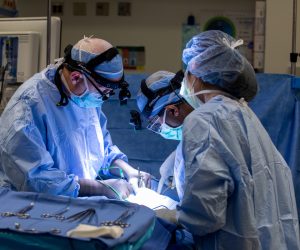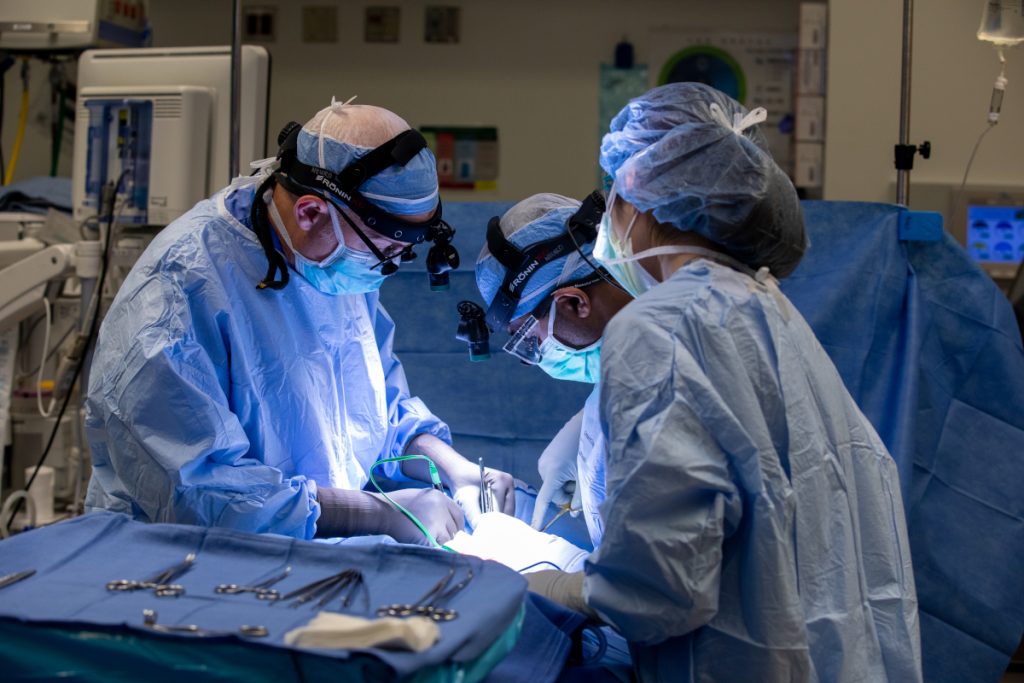
by Penn State Health
A treatment offered at Penn State Health is helping people regain function following a stroke, even several years later – and is proving to be a life-changing treatment for people who’ve had strokes and exhausted all other treatments and therapies.
Milton S. Hershey Medical Center is the only hospital in central Pennsylvania to offer Vivistim, a system that pairs vagus nerve stimulation with physical or occupational therapy as well as daily activities. The treatment, which involves an implantable device, is for people who have moderate to severe upper arm impairment following a stroke.
Vivistim is designed for chronic stroke patients at least six months after their stroke. Some patients see improvement when initiating treatment 20 or more years after their stroke.
“What’s exciting about this treatment is how it allows us to take post-stroke neurological recovery to the next level by modifying brain connections that are needed to improve hand and arm function,” said Dr. Raymond Reichwein, co-medical director of the Comprehensive Stroke Center at Milton S. Hershey Medical Center.
The first step in Vivistim treatment is surgery to implant a small device under the skin in the upper chest. The surgeon attaches the device to a wire under the skin that leads to an electrode placed on the left vagus nerve in the neck. About one to two weeks after the device is implanted, patients begin rehabilitation therapy focusing on the affected arm, hand and wrist. During each session, a physical or occupational therapist activates the device while the patient participates in therapy customized to their specific needs.
After patients complete the intensive, six-week therapy, they continue with one to two sessions per week, based on their needs. These sessions are provided with a therapist in the clinical setting and through self-directed therapy at home.
“The surgical procedure has been around for decades,” said Dr. Michael Sather, a neurosurgeon at Milton S. Hershey Medical Center. “It’s the device and treatment for chronic stroke recovery that are new.”
Neurostimulation is also commonly used to treat epilepsy, depression, cluster headaches, and migraines. It can also help to control seizures and treat Parkinson’s disease, essential tremors, and other disorders.
Treatment with Vivistim has been shown to improve arm and hand strength and dexterity significantly in many stroke patients – and that can also lead to a meaningful improvement in their quality of life.
Currently, Vivistim is only FDA-approved for upper extremities, but Sather hopes it will be studied to help treat other problems associated with stroke, such as leg and speech impairments.
Penn State Health is a multi-hospital health system serving patients and communities across 29 counties in central Pennsylvania. The system includes Penn State Health Milton S. Hershey Medical Center, Penn State Health Children’s Hospital and Penn State Cancer Institute based in Hershey, PA; Penn State Health Hampden Medical Center in Enola, PA; Penn State Health Holy Spirit Medical Center in Camp Hill, PA; Penn State Health Lancaster Medical Center in Lancaster, PA; Penn State Health St. Joseph Medical Center in Reading, PA; Pennsylvania Psychiatric Institute, a specialty provider of inpatient and outpatient behavioral health services, in Harrisburg, PA; and 2,450+ physicians and direct care providers at 225 outpatient practices.
Additionally, the system jointly operates various health care providers, including Penn State Health Rehabilitation Hospital, Hershey Outpatient Surgery Center, and Hershey Endoscopy Center. In 2017, Penn State Health partnered with Highmark Health to facilitate creation of a value-based, community care network in the region. Penn State Health shares an integrated strategic plan and operations with Penn State College of Medicine, the University’s medical school.




